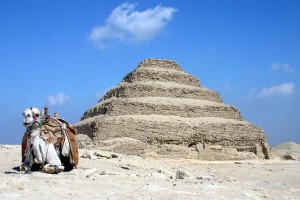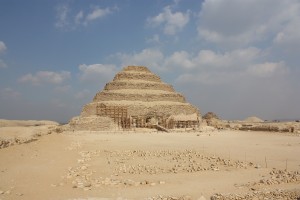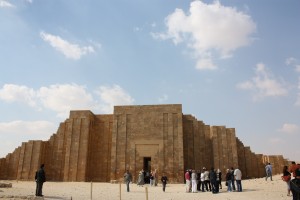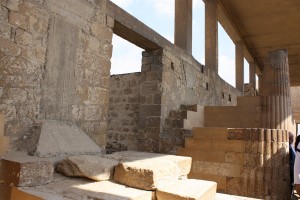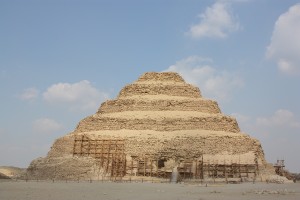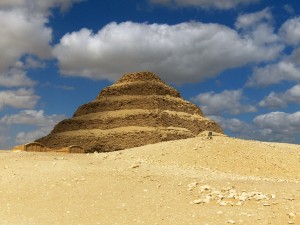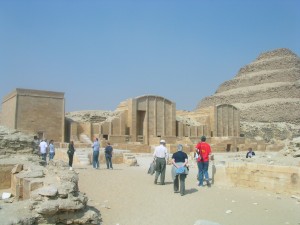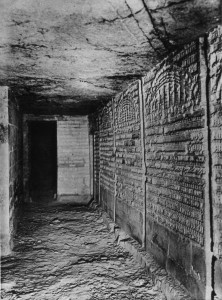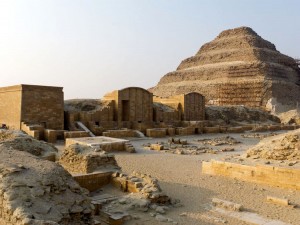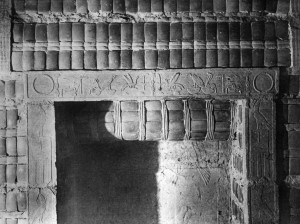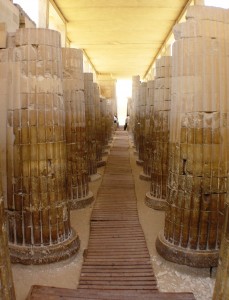Written by Soudip
October 20th 2014You Are Here
Home > Egypt > Great Pyramid of Giza Historical Facts and PicturesPyramid of Djoser Historical Facts and Pictures
Located in the northwest of Memphis city, in Saqqara necropolis, the archaeological remain of the Pyramid of Djoser is the burial of Pharaoh Djoser. Built in 27th century BC by Djoser’s vizier, Imhotep, it was the first step pyramid in Egypt. Dominating the Saqqara landscape, the pyramid is surrounded by several ceremonial structures.
Pyramid of Djoser Entrance
Architectural description
Deviating from previous architectural forms, this 62-meter high structure consists of six stepped layers. Initially, the structure was a square mastaba, which was built in two stages. The builders deployed accretion layers for its construction that diverged from the horizontal courses of other mastaba formations. Extensive use of stonework is visible in the structure. A 10.5-meter high wall of Tura limestone surrounds the complex, which includes courtyards and temples.
Interior structures of Pyramid of Djoser
A roofed colonnade entrance from the enclosure wall leads to a hall that comprises 20 pairs of limestone columns with small chambers placed on both sides between them. The transverse hypostyle room was located at the end of the colonnade, leading to a large South Court that is located between the South Tomb and the pyramid. The curved stones within the South Court are believed to be the territorial markers of the Sed festival, the ritual of the Egyptian kings to replenish their powers. The palace-like structure of the pyramid was meant for the afterlife rituals. It allowed the king to perform the duties of kingship even after death. The South tomb lies on the south of the court, which is entered through a tunnel-like corridor, leading to a pink granite burial chamber. A labyrinth of galleries and chambers is located underneath the pyramid that connects to a shaft. These underground passages are constructed with limestone and blue faience tiles.
The Pyramid of Djoser was the largest cut stone construction of that time. The remarkable stepped architecture of this monument built the stage for later pyramids that includes the great pyramids at Giza.





